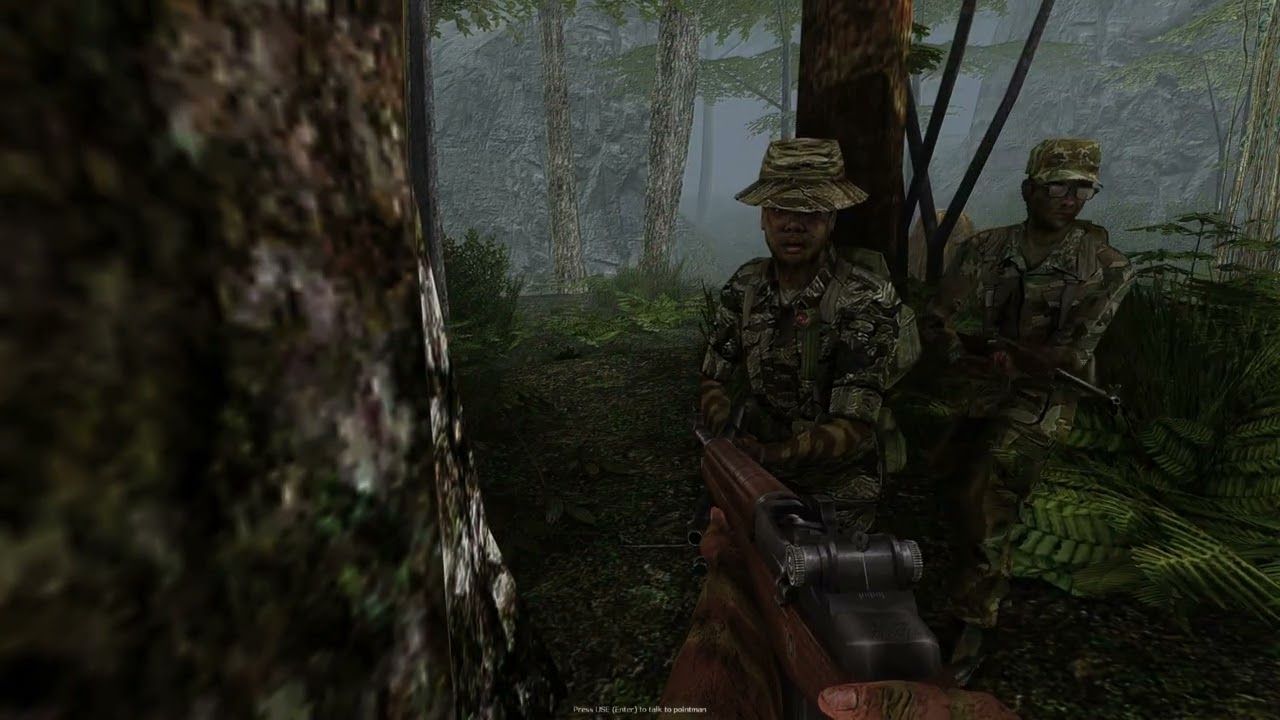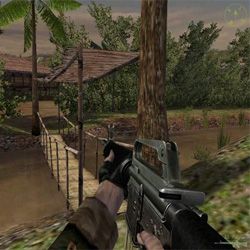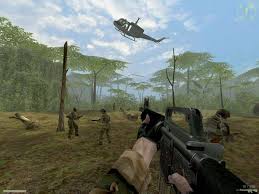Welcome to our questions and answers section about the popular video game Vietcong! Here you will find helpful answers to frequently asked questions about Vietcong. Whether you’re looking for gameplay tips, need information about multiplayer maps, or require technical support – we’re here to help. Ask your own question or browse through our extensive collection of questions and answers to make the most of your Vietcong experience. Let’s get started!
Yes, Vietcong is also available for consoles. The game was originally released for PC, but later an Xbox version titled “Vietcong: Purple Haze” was developed. This version was specifically adapted for the Xbox console and offers a similar gaming experience to the PC version. If you want to play Vietcong on a console, you should look for “Vietcong: Purple Haze” and check if it is available for the desired console generation.
Although Vietcong was released some time ago, there is still an active community of players who enjoy the game. There are still online servers and multiplayer matches available to join. However, the player count may have decreased compared to its peak times. Nevertheless, there is a dedicated group of players who regularly play Vietcong and create new content. If you’re interested in playing the game, you could search for servers or engage with other players in the Vietcong community to find fellow players.
The term “Charlie” was used during the Vietnam War to refer to the Vietnamese resistance fighters who operated as part of the Viet Cong. This is an informal designation that was used by the US military forces during the war.
The use of the name “Charlie” originates from the phonetic alphabet used in military radio communications. Each letter of the alphabet is associated with a specific term to avoid confusion. In the NATO phonetic alphabet, the letter “C” is associated with the word “Charlie.”
During the Vietnam War, as radio communication played a crucial role, the US troops utilized the phonetic alphabet to ensure clear and unambiguous communication. When referring to the radio communication of Vietnamese resistance fighters, they used the letter “C” and pronounced it as “Charlie.” Over time, “Charlie” became a common designation for the Viet Cong.
It is important to note, however, that the term “Charlie” was not exclusively limited to the Viet Cong. It was also used to generally refer to enemy forces in Vietnam, regardless of whether they belonged to the Viet Cong or other groups.
The Vietnam War did not end with a clear victory for any of the parties involved. It was a complex and protracted conflict that was shaped by political, military, and social factors. espite the United States possessing superior military equipment and technology, the Viet Cong, supported by North Vietnam, was able to leverage several strategic advantages, leading the war to reach a political and military stalemate. There were several factors that contributed to the so-called “victory” of the Viet Cong:
-
Guerrilla Warfare: The Viet Cong relied on effective guerrilla warfare. They employed tactics such as ambushes, mines, tunnel and bunker systems, as well as the use of local supporters to surprise and weaken the enemy. This asymmetric warfare made it difficult for the US troops to effectively combat the enemy.
-
Support from the local population: The Viet Cong could rely on significant support from the Vietnamese population. Many people supported the communist ideals of the Viet Cong or were opposed to the presence of foreign troops for various reasons. The support of the local population allowed the Viet Cong to gather information, find hiding places, and receive supplies.
-
Ho Chi Minh Trail: The Viet Cong and North Vietnam utilized the Ho Chi Minh Trail, an extensive network of supply routes that extended from North Vietnam through Laos and Cambodia. Through this trail, they were able to transport troops, weapons, and supplies to the south, sustaining their war efforts.
-
Political Factors: The war led to an increasing division within the American public and growing resistance against the war. This ultimately led to the reduction of US troop presence in Vietnam and eventually their withdrawal. The political instability and domestic pressure had implications on the leadership and deployment of US troops.
It is important to note that the Vietnam War ultimately did not have a clear winner. In 1975, the North Vietnamese Army captured Saigon, the capital of South Vietnam, and united the country under communist control. This is often regarded as a military defeat for the South Vietnamese forces and their allies. However, the war was characterized by numerous losses and destruction on all sides and had far-reaching impacts on the involved countries and international politics.
It is difficult to provide an exact number for the amount of Viet Cong fighters killed during the Vietnam War, as there were no precise records kept during the war and estimates vary widely. The Vietnam War was a protracted and costly conflict, with high casualties suffered on both sides.
Estimates suggest that Viet Cong losses may have ranged between 30,000 and 100,000 killed fighters. It is important to note that these estimates have a wide range, as it is difficult to determine precise numbers, especially regarding the Vietnamese side of the conflict.
The Vietnam War resulted in tremendous losses on all sides. It is estimated that over 1 million Vietnamese, including both civilians and military personnel, lost their lives during the course of the war. This includes both the Viet Cong and the North Vietnamese forces. Additionally, many American soldiers and members of the South Vietnamese forces also lost their lives.
It is important to emphasize that these numbers are estimates and can vary depending on the source. Due to the challenges in accurately recording data during the war, the exact casualty figures may never be determined with precision.
The Viet Minh and the Viet Cong were two different political-military organizations, both associated with the Vietnam War. Here are the basic differences between them:
-
Timeframe: The Viet Minh was established in 1941 as a communist organization that formed during World War II to oppose French colonial rule in Vietnam. On the other hand, the Viet Cong was established in 1960 as an underground movement that was active during the Vietnam War.
-
Goals and Ideology: The Viet Minh initially aimed to achieve Vietnam’s independence from French colonial rule. They were a national liberation and communist-oriented organization led by figures such as Ho Chi Minh. On the other hand, the Viet Cong was a paramilitary organization during the Vietnam War that engaged in armed combat against the South Vietnamese government and its allies, including the United States. The Viet Cong was also aligned with communism and closely connected to North Vietnam.
-
Organizational Structure: During World War II and thereafter, the Viet Minh was a broader movement consisting of various political and military groups. After the division of Vietnam in 1954, the Viet Minh transformed into the newly established Communist Party of Vietnam in North Vietnam. In contrast, the Viet Cong was a specific organization that conducted armed combat in South Vietnam. They operated as guerrilla forces and relied on a decentralized organizational structure.
-
The Viet Minh was active throughout Vietnam and conducted both armed combat against the French colonial forces and political activities to mobilize the population. The Viet Cong primarily focused on South Vietnam and conducted guerrilla warfare against the South Vietnamese government and its supporters in that region.
Although there were differences between the Viet Minh and the Viet Cong, there was a close connection between them. The Viet Cong emerged from the remnants of the Viet Minh and received support from North Vietnam. Both organizations shared the common goal of unifying Vietnam and establishing communist rule.
Why was the Vietnam War fought?
The Vietnam War, in which the Vietcong played a crucial role, occurred for various reasons. It was a complex conflict that involved political, ideological, and military elements. Here are some of the main reasons for the war:
Colonialism and aspirations for independence
Colonialism and aspirations for independence: Vietnam was a former French colony and sought independence. Vietnamese nationalism and the desire for self-determination led to conflicts with the French colonial power.
Ideological differences: During the Cold War, the Vietnam War was connected to the global conflict between the communist bloc led by the Soviet Union and China, and the Western bloc led by the United States. The Vietcong was a communist guerrilla movement that fought for the reunification of Vietnam under a communist government.
Division of Vietnam: After the withdrawal of the French, Vietnam was divided in the 1950s into North Vietnam (under communist control) and South Vietnam (under pro-Western control). The Vietcong fought to overcome this division and create a unified communist Vietnam.
American Involvement: The United States chose to support South Vietnam in its fight against communism and deployed military advisors to assist the South Vietnamese government. Over time, American involvement escalated, leading to direct military intervention.
Guerilla warfare and asymmetric tactics
Guerrilla warfare and asymmetric tactics: The Vietcong employed guerrilla warfare and asymmetric tactics to combat the superior military power of the United States and its allies. This included the use of tunnels, hidden bases, ambushes, and improvised explosives.
The Vietnam War was a devastating conflict that claimed millions of lives and had significant impacts on the countries involved. It is important to note that this is only a simplified summary of the reasons, and that the conflict was much more complex.



